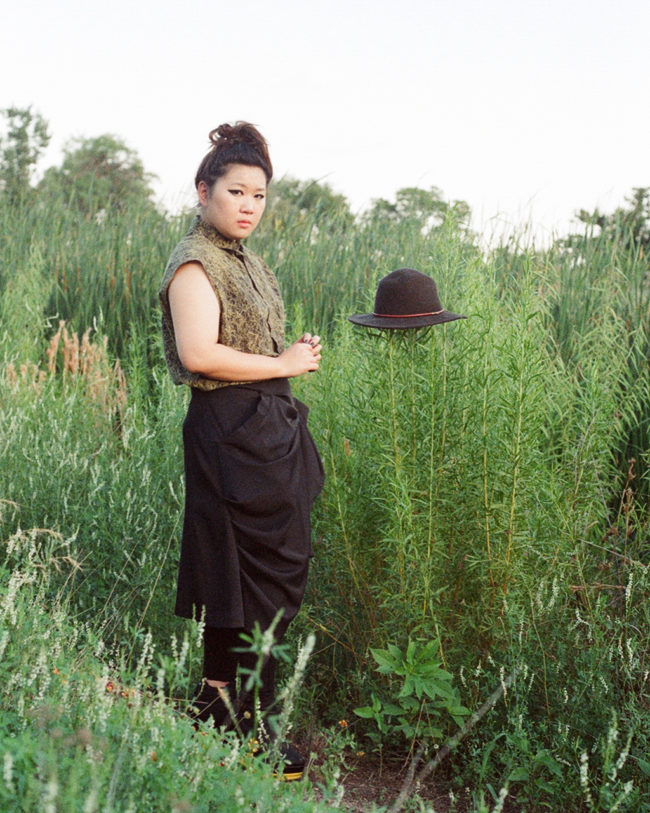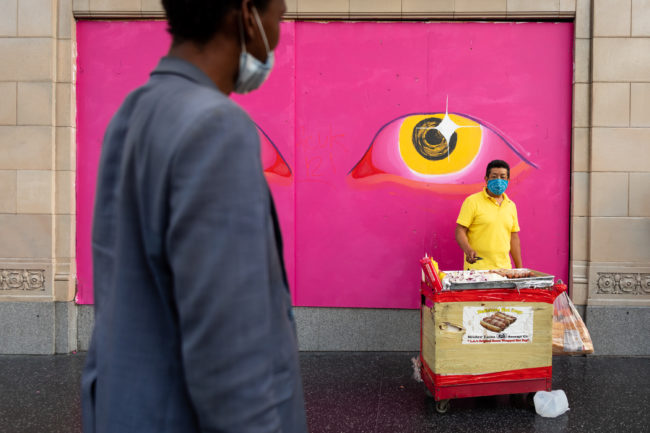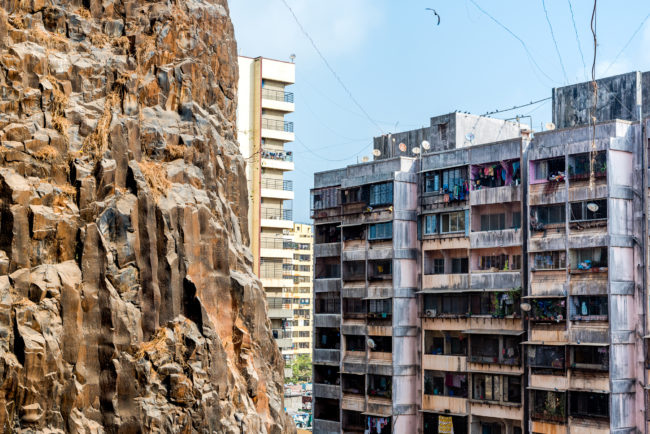




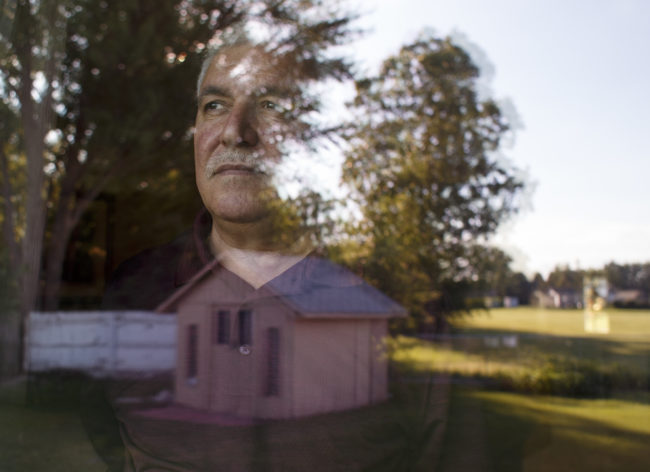
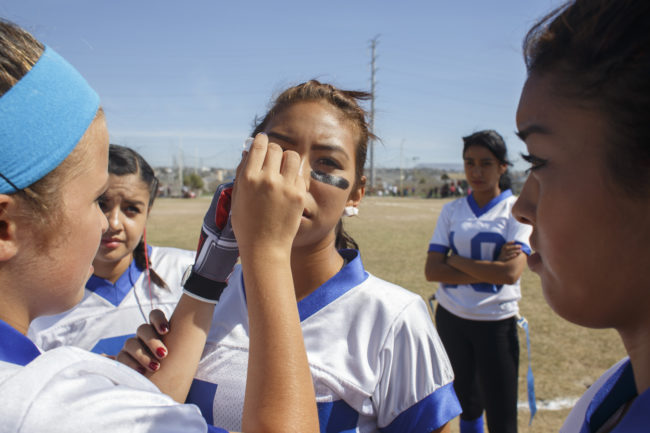
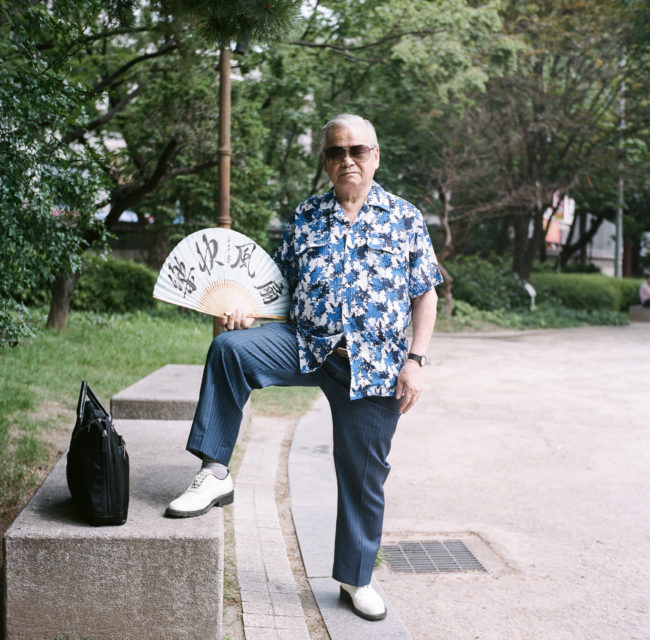

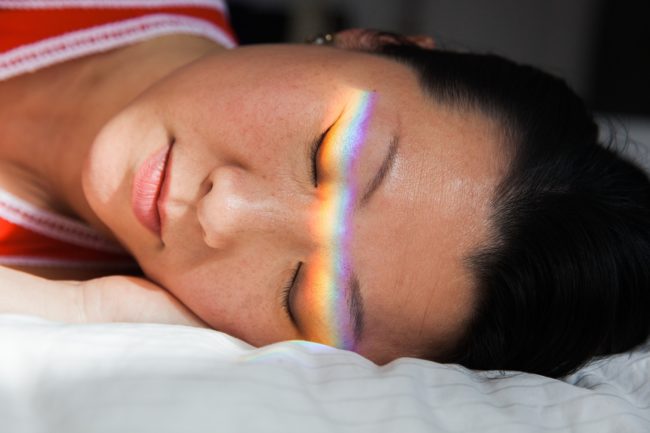
“I look this way, but I feel another way.”
– from the series “I Stand between”, a project on transracial adoptees, specifically Asians adopted by white families.
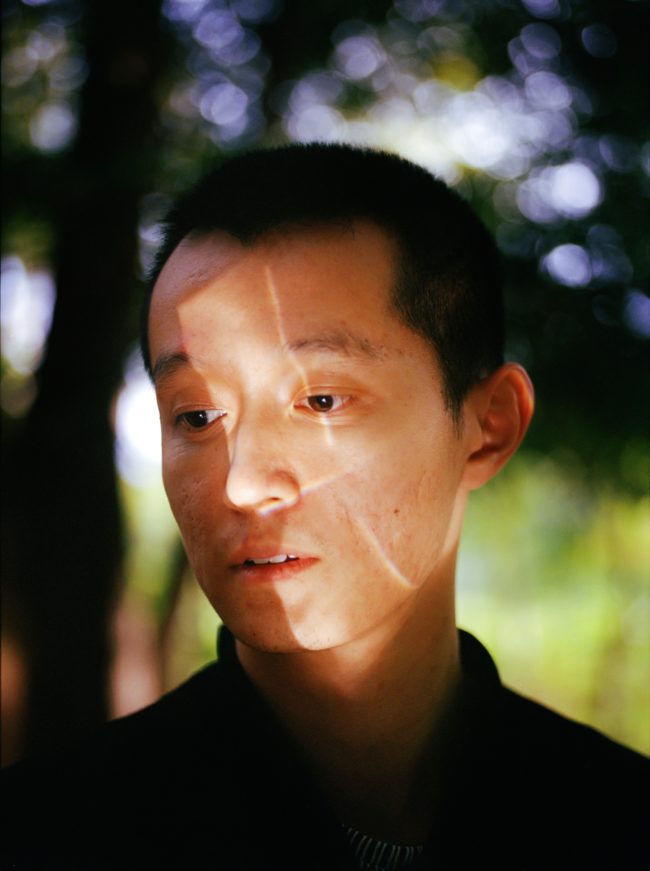

Authority Collective
The Photo Bill of Rights
The Lit List 2020
The Photoshelter/AC Guide to Inclusive Photography
Exhibits, panels, talks, events and projects they’ve done over our two years as an organization
Instagram
Heidi: AC was formed during a symposium where you asked about who gets to tell marginalized stories. Since inception how has the script changed now that you’ve created these resources?
The beginning of AC came out of a desire for community and stability in a chaotic, unsupportive professional landscape for women of color media makers. Over the last two years, we’ve found that this is a movement, a reimagining and a reckoning for the old guard who hoard their resources, limit access and shut down attempts at progress. I don’t think we thought we would be attacked the way that we have been as we became more influential, but we also could never have imagined how powerful and necessary this community and the organization itself has become. I’ve seen a sea change in the last two years due to the labor of orgs like ours, Women Photograph, Everyday Projects, DiversifyPhoto and so many others. People are listening, they’re learning, they’re opening their spaces and those who are pushing back against diversifying and including more perspectives are showing the industry exactly why we need these changes.
— Tara Pixley, co-Founder and Board Member, Los Angeles-based independent visual journalist and professor at Loyola Marymount University || @tlpix || www.tarapixley.com
Since releasing the Do No Harm Statement, the Guide to Inclusive Photography, and the Bill of Rights we’ve discovered that many people were asking themselves these same exact questions. What we did was expose people to the thinking and language of decolonizing photography, which in itself sounds like a tall order. But, we aim for practicality, usefulness, encouraging action and ways of being. In these ways we make the work of decentering the western, gendered gaze accessible. What’s changed is that we’ve stopped asking the questions and started answering them ourselves, stepping into our authority.
— Bunni Elian, Board Member and independent multimedia journalist based in New York City || https://www.hellobunni.com/
Now that you’re a few years out, what would you tell your younger AC?
I would want to tell our younger selves that people will support us and people will believe in us. Despite the uncertainties and what seemed like slow or maybe hesitant reception, I would tell the younger AC to stick to what they believe in. I would tell them trusting friendships are growing out of it and so many people within the photo industry are taking AC seriously. AC is doing important work within the industry and you’ll see the fruits of your labor.
— Hannah Yoon, co-Founder and Board Member. Freelance photographer in Philadelphia @hanloveyoon || www.hannahyoon.com
I would tell our younger selves to get incorporated ASAP. We have had so many incredible opportunities and collaborations in this time, so many wonderful sponsors and kind individuals who have supported our efforts or amplified the message of decolonization and inclusion. However, the hundreds of hours of work put into building this community and making change through interventions, exhibits, talks, panels, community meet-ups, open letters and one billion meetings, etc. — all of that has been primarily volunteer labor on the part of a devoted 7-10 person crew (depending on the makeup of the Board at the time). If we could have incorporated earlier, we would have been in a better position to provide financial resources, grants, stipends, etc. to all the Authority Collective Community and work on much bigger scales. But that is all in the works now! And I wouldn’t trade a single thing from the incredible lessons learned from our grassroots, independent, scrappy efforts that built something really worthwhile and beautiful for our community. — Tara Pixley
What Hannah said above and that it is worth doing this because people who experience microaggression and discrimination in this industry don’t feel isolated. That they feel validated and affirmed.
— Mary Kang, Board Member and NYC-based independent photographer || @mary.kang || http://www.marykang.com
I would tell the younger version of our organization to focus on ideas in addition to the call-outs. Initially, we thought we could just single out corporations and institutions to help them do better individually, but we’ve found within the last few weeks that we provide more value in investigating the problematic conventions of journalism, rather than a case by case basis. Doing so took the conversation further, bringing more people to the table and fostering introspection among those who see our resources. Rather than saying one entity is a bad actor, people can internalize it and ask themselves ‘When have I acted in a similar way?’ We’ve also shifted from demands to suggestions and considerations.
— Bunni Elian
With all the resources available, are you still stumped by content creators finding it hard to find diverse voices? Are you feeling like people are not doing the work? Is it budgets? lack of risk? all of the above?
At times, we are stumped and not sure why there is still a slow movement to be as inclusive as possible within our industry. We wonder if it’s a budget issue or if some editors feel comfortable working with photographers they’ve already worked with. We have formed relationships with some photo editors within the industry, but there are others we have not connected with. We understand there is a culture of the editor+photographer relationship within the industry that is difficult to change. — Hannah Yoon
We notice the efforts being made by some photo editors, but we also understand the bureaucracy within each publication or company. If people in the executive level think hiring photographers they have never heard of is risky, then photo editors who push for equity also don’t feel heard. There needs to be a structural shift in company culture that values diversity, inclusivity, and accessibility. — Mary Kang
I would second what Mary said here. There are so many organizations and databases at this point highlighting the myriad brilliant photographers available to work, so it can’t realistically be said that photo editors “can’t find” photographers of color. In my experience, gatekeepers in journalism hire within their circles and known networks, relying on existing relationships. But also you can’t just make an intervention at the highest levels, saying “well here, you could hire these people” and think that’s a done deal, you’ve made it inclusive and accessible! No. It starts well beyond that. It starts when Black and brown children don’t know this is a job they can have, when they go to college and aren’t encouraged to develop a photographic aesthetic or are encouraged to align their existing perspective with the status quo of the Western Gaze. When they don’t have the resources to buy all the camera equipment their wealthier (often White) peers can. When they can’t take unpaid internships or travel around the world to get the portfolio pieces their White and wealthier peers can. The complex and inequitable dynamics of the photo industry start well before any database or list. Those are the things AC is pushing to address and make the industry recognize. Lists are great if you use them. What is far better would be a complete reimagining of what we perceive to be valid perspectives, what aesthetics are valued and included, what voices are listened to and encouraged. Also we need a re-education of the photo editor profession and practice. I’ve been a photo editor for international publications and news orgs: I will say that some take the job seriously and love being an advocate for photos and photographers. Others coast with limited knowledge of the field or the impact that images have in the world. We won’t achieve real change if we aren’t addressing the problems at every step of the editorial process and dedicating ourselves to making our visual media better across the board. — Tara
It should also be noted that so much of the newsroom has been consolidated to the work of researching photographers, mentoring, nurturing relationships and people are stretched super thin. I’ve heard countless photo editors say they lost that aspect of the work, which they really enjoyed. So photo editor burnout is real, very human and can create the conditions where some choose the shortcut of people they know. COVID-19 for example, is NOT a time to experiment. You’ll contact your go to photographer over a new hire and not pressure people to take on health risks. That’s understandable. That’s why it’s paramount to incorporate diversity and inclusion efforts throughout the years so you can maintain diversity of perspective when news breaks. — Bunni
What makes this moment different and what are the tangible goals you hope we hit as content creators?
The progress I want to see… the photo bill of rights explains it all (haha). Mostly equity, diversity, inclusion, accessibility, and fair contract and payment. Also, we need people to not only listen, but believe what we say and build actions. — Mary
The confluence of the unfair practices in journalism, the pandemic, and the narrow visual rendering of the Black Lives Matter movement in early June has put us in a unique position to rise to the occasion to use the current conditions as concrete examples we can all see. It also doesn’t hurt that the majority of people everywhere are stuck at home with plenty of time to spare! So often people want to engage, but life gets in the way. The truth is though, beyond the quick response of the Do No Harm Photo statement, the creation of these resources has been in the works for months. — Bunni
I am looking for the industry to want to be better. I understand progress is scary and some people won’t flourish with more competition. But if you’ve actually been working hard, doing great work and adhering to the ethics of our profession, a more inclusive and equitable industry will only positively affect you. Progress looks like recognizing the photo industry has passively been a part of the problem (of exclusions and stereotyping around race, gender and class) but now wants to actively participate in building a better world with more accurate and holistic visual perspectives. — Tara
There’s a big push to hire both in front of and behind the camera. How has the diversity and inclusion conversation progressed at this moment and how does the collective feel/what do they think about it?
I am seeing some progress, but still many POC photographers are being asked to work for free or at an unfair rate. I am seeing small incremental steps, but still the majority being hired are white cis male photographers. We are not hating on them, we just want people to think about that disproportion and bring more equitable changes as there is no shortage of talented photographers who are not a white cis male.— Mary
The conversation hasn’t changed, just more people are being loud about it. A sea change is bound to occur when photographers band together and demand for the hiring of black photojournalists to cover Black Lives Matter for example. The difference in coverage is immense. That’s been huge! Our members appear to be a part of this shift and cheer on the Authority Collective just as much as we cheer and uplift them. — Bunni
I would say that diversity and inclusion has become a very prevalent conversation in some realms and in other places people are doubling down on exclusion. However, the thing about forcing the conversation is it clarifies who is willing to engage and who is holding on to their white/Western/male/class privilege and uninformed stances for dear life. We’re in a historical moment for our industry and people are deciding what side of history they’re going to be on. They’re also very handily publicly stating those positions and uneducated/unethical/exclusionary approaches to visual media practices on social media. So, in a few years I think we’ll see really how our industry has progressed, how we’ve become better collectively, more diverse and more educated about social realities that affect our work as photographers and what more work there is to be done. — Tara
How do you celebrate your forward movement and big changes in the media landscape?
I think about the saying “we are only strong as the weakest ones in our society.” I wouldn’t say anyone is weak, better word may be under-resourced. Whenever there is progress it is good for the industry as a whole as we can be stronger together and that serves everybody. — Mary
As a board we are constantly celebrating each other’s efforts and the achievements of our membership and larger photo community, so we’re not really celebrating, we’re just trying to keep up with the flood of emails! Ha! But, seriously, I’d say we feel encouraged more than anything to keep on the right track. We’re beyond thrilled to see all these conversations popping up across social media. Maybe we’ll celebrate when we can see sustained changes. But for now we are pleased that our work has reverberated.— Bunni
Who and what inspires the collective?
I’m personally inspired by people who work in depth to uplift under-resourced visual storytellers and call in problematic behaviors so that more of us can concentrate on just making the works instead of having to deal with microaggressions and other barriers. I am inspired by those kindness and passion that look out for each other even when we may not feel perfect. — Mary
I’m inspired by being able to empower people on how to navigate microaggressions and cultural and racial insensitivity. It’s like solving a puzzle by handing each member a piece. I’m also inspired by the groups that have arisen in this time of many questions and few answers. Unofficially, we refer to this collection of groups as “RECLAIM” and that we at times work in tandem or collaborate directly and are not in competition is so inspiring. Cooperation has taken humankind immensely further than competition. I’m inspired by our dedication to be a force for something better. I’d literally be depressed if not for this work. It gives me purpose and community. — Bunni
How do you try and stand out in the flood of social media? What is the one singular message?
We focus on amplifying the works of talented and underrepresented visual storytellers in mainstream media. This effort includes reposting their works on our Instagram stories as well as having people use our Instagram platform to introduce their works by doing Instagram takeover. Additionally, we notice the discussions going around online discourses and try to amplify those messages as well, in support of bringing more equity and ethical values to the industry. Our social media platforms naturally grew over time through word of mouth. More so than trying to stand out, we focus on connectivity with people who share similar visions, building community and celebrating accomplishments of the members. — Mary
Our singular message, if we had to have one, is that the experiences, viewpoints and work of our membership are valid. We can be experts, we have a voice and we have something to say about this world through our work and we’re not going anywhere. — Bunni
